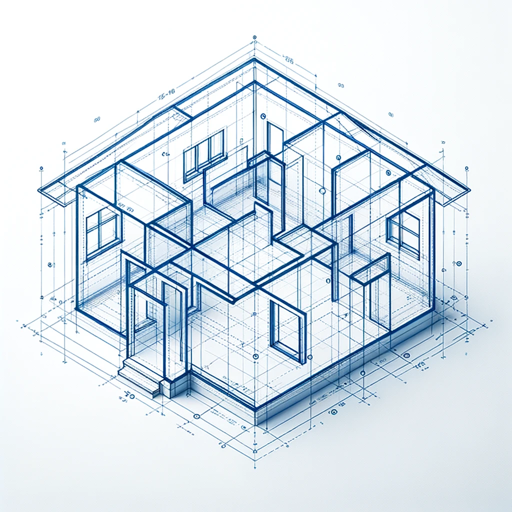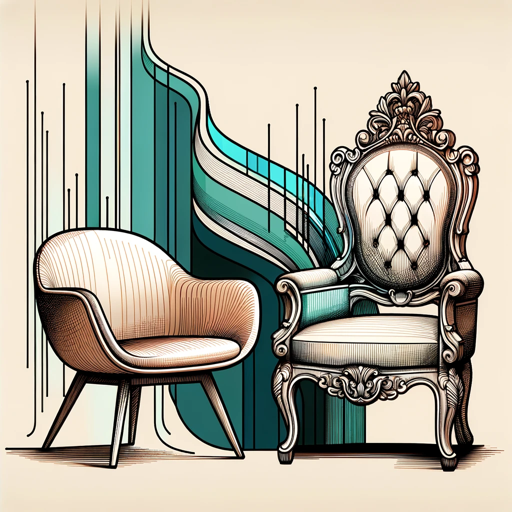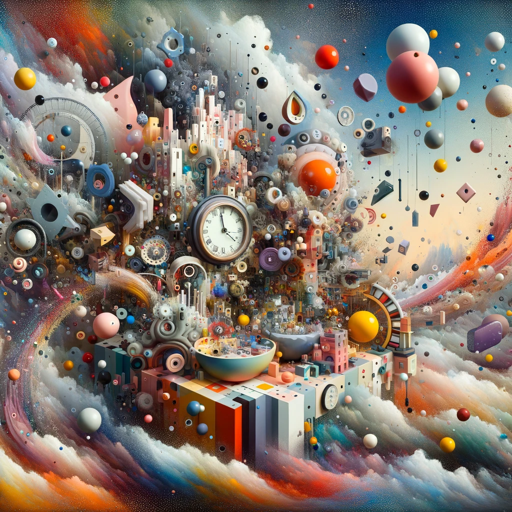Architecture AI-AI-driven architectural solutions.
AI-powered architecture at your fingertips.
Help me design my dream home.
I want to design missing-middle housing.
Let's design a skyscraper.
Help me envision a Texas row house.
Related Tools
Load More
Architec Gen
Advanced architectural design assistant with high-quality image generation.

Enterprise Architecture Copilot
Your adept guide in enterprise and software systems, offering diverse solutions and insights.

Ai Landscape Design & Architecture
Expert services in landscape design, landscape architecture, landscaping ideas, landscape lighting, garden landscaping, and garden services. Call 📱 for creative, AI-assisted landscaping solutions.

Architecture AI
Architecture AI is a cutting-edge tool designed to effortlessly visualize and refine architectural designs. It transforms rough ideas into detailed, realistic 3D models, enhancing creativity and precision in planning

Architectural Renderings
Elevate your architectural visualization skills with expert AI guidance. Create stunning renderings that bring your designs to life. 🏗️🎨
Ai建筑设计
Architectural design visualization from text.
20.0 / 5 (200 votes)
Introduction to Architecture AI
Architecture AI is an advanced digital tool designed to assist architects, designers, and developers in visualizing and planning building designs. Leveraging cutting-edge AI technologies, it generates detailed descriptions and realistic visual representations of both the exterior and interior spaces of buildings. By simulating photo-realistic images, Architecture AI helps users explore various design concepts and aesthetic choices before actual implementation. For example, an architect can input their design parameters into Architecture AI and receive a high-quality visualization of a proposed building facade set against a tree-lined urban street, helping them to assess the design's fit within its intended environment.

Main Functions of Architecture AI
Design Visualization
Example
An architect is designing a new residential complex and needs to present the concept to stakeholders. Architecture AI generates detailed, high-resolution images of the exterior facades and interior layouts based on the input parameters, providing a clear visual representation of the proposed design.
Scenario
An architectural firm is bidding for a project to build a mixed-use development. They use Architecture AI to create visualizations that show potential designs for both commercial and residential spaces, helping to convey their vision to the client in a compelling way.
Ambience and Aesthetic Simulation
Example
A designer wants to explore how different lighting schemes and materials affect the mood of a modern office space. By using Architecture AI, they can simulate various lighting conditions and material finishes, allowing them to select the optimal combination that enhances the office's ambiance.
Scenario
During the renovation of a historic building, the design team uses Architecture AI to visualize how different restoration approaches, including the use of traditional materials and modern lighting, would impact the overall look and feel of the interior spaces.
Environmental Integration
Example
A developer is planning a new high-rise in a bustling city and needs to ensure the building integrates well with the surrounding urban landscape. Architecture AI provides visualizations that place the proposed building within a digital model of the city, helping the developer assess the building's impact on the skyline and its harmony with nearby structures.
Scenario
For a suburban housing project, the team uses Architecture AI to visualize how different architectural styles would fit into the neighborhood's existing character, ensuring the new homes blend seamlessly with the local environment.
Ideal Users of Architecture AI
Architects
Architects benefit from using Architecture AI to create detailed visualizations of their designs. This helps in presenting ideas to clients, refining design concepts, and ensuring the practicality and aesthetic appeal of their projects before moving to the construction phase. By providing realistic images and scenarios, Architecture AI aids architects in making informed decisions and communicating their vision effectively.
Real Estate Developers
Real estate developers use Architecture AI to visualize and market new projects. By generating high-quality images of proposed buildings and their surroundings, they can attract investors, pre-sell units, and make necessary adjustments to designs based on visual feedback. This tool enables developers to demonstrate the potential of a project to stakeholders and to the community, increasing the likelihood of successful project approval and financing.

Using Architecture AI: A Step-by-Step Guide
Step 1
Visit aichatonline.org for a free trial without login, no need for ChatGPT Plus.
Step 2
Define your architectural needs: Specify whether you need help with design, visualization, or material recommendations.
Step 3
Input your project details: Provide key information such as building type, location, style preferences, and any specific requirements.
Step 4
Review AI-generated proposals: Examine the generated designs, visualizations, or recommendations, and refine your inputs if needed.
Step 5
Download and implement: Once satisfied with the output, download the files and incorporate them into your architectural project.
Try other advanced and practical GPTs
猫耳メイドるみほたん
Abstract problem-solving made easy with AI

每日星座
AI-powered daily horoscope and energy wallpapers

Master Plan
AI-driven planning made easy.

Startup GPT
AI-powered solutions for startup success
AI Furniture Designer
Transform your space with AI power

Direct Answer
AI-powered tool for quick, concise answers

VinuChain and VINU GPT
AI-powered insights for VinuChain's feeless ecosystem.

Code Companion
AI-powered tool for coding solutions

data trip
AI-driven data interpretation and research

The Illustrator
AI-powered tool for creating custom pen-and-ink sketches

The 1-Page Marketing Plan
AI-Powered Marketing Plan on a Single Page

Thumbnail Generator
Create Engaging Thumbnails with AI

- Project Planning
- Material Selection
- Design Concepts
- Visual Proposals
- Technical Drawings
Common Questions about Architecture AI
What kind of architectural tasks can Architecture AI assist with?
Architecture AI can assist with design ideation, visualization of building exteriors and interiors, material selection, and providing technical documentation for projects.
Is Architecture AI suitable for both professionals and amateurs?
Yes, Architecture AI is designed to cater to both professionals who need precise architectural solutions and amateurs looking to explore and visualize their creative ideas.
Can Architecture AI create photorealistic images of my designs?
Absolutely, Architecture AI specializes in generating photorealistic, magazine-quality images of architectural designs, including detailed facades and interior layouts.
How customizable are the outputs from Architecture AI?
The outputs are highly customizable. Users can specify various parameters such as building style, materials, and environment to tailor the results to their needs.
What are the system requirements for using Architecture AI?
There are no specific system requirements since Architecture AI operates via a web browser. A stable internet connection is the only prerequisite.